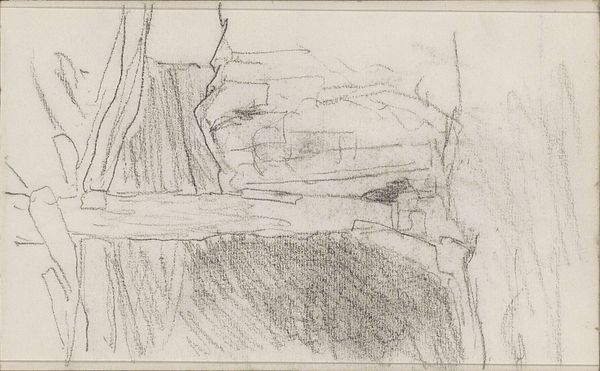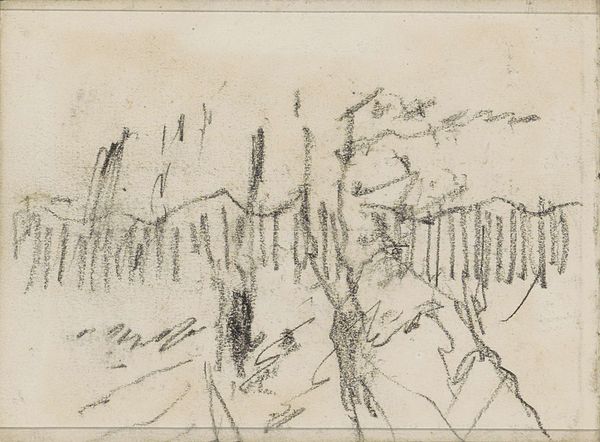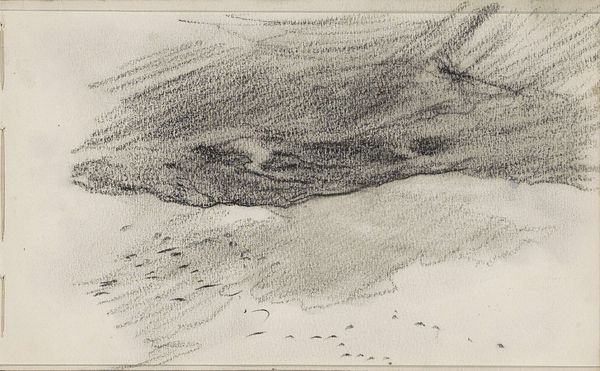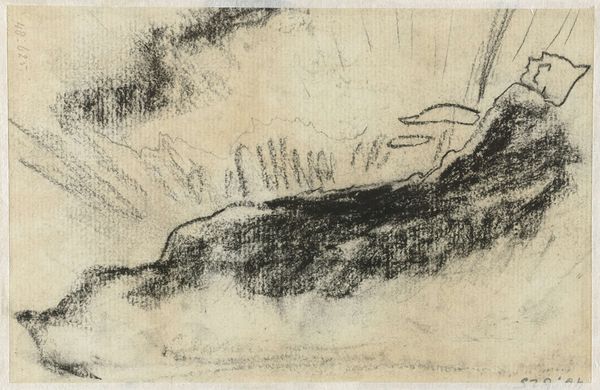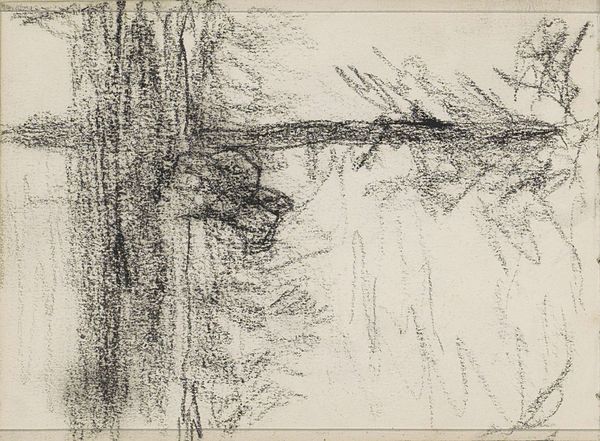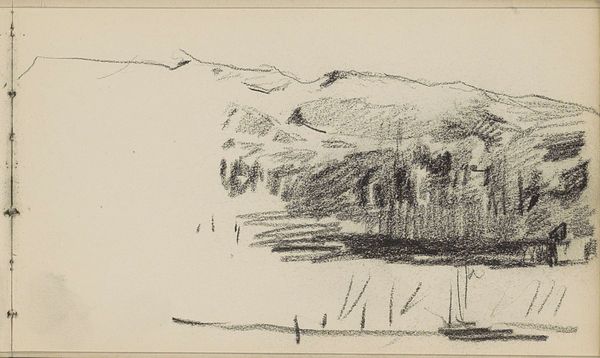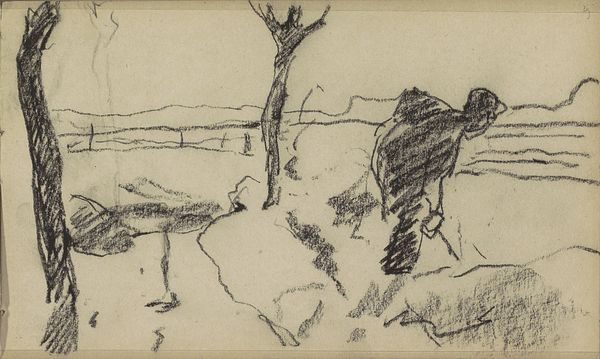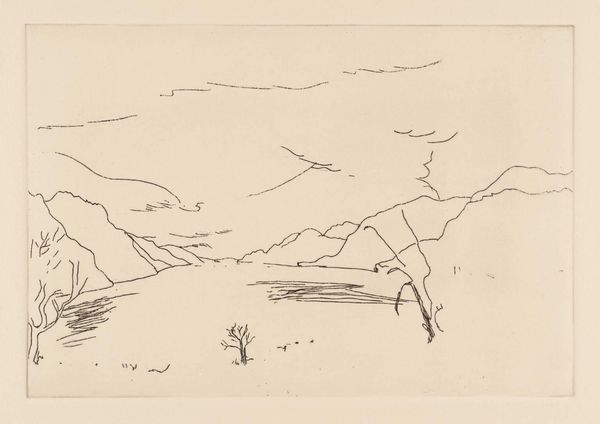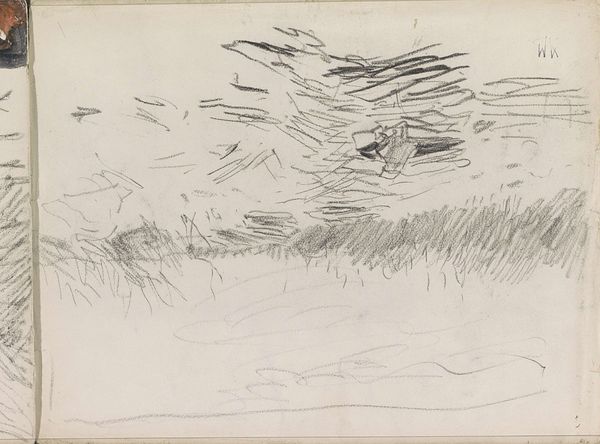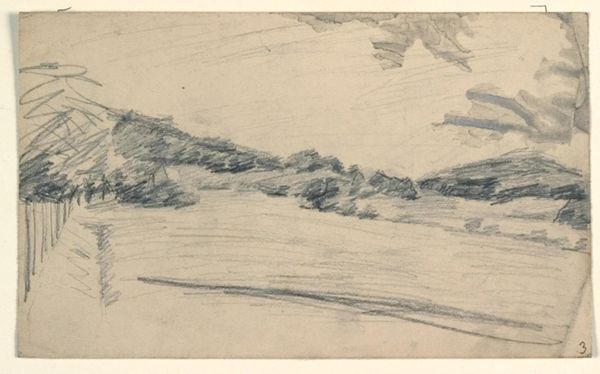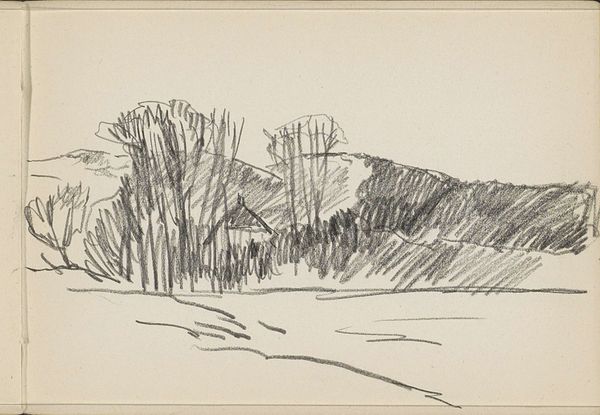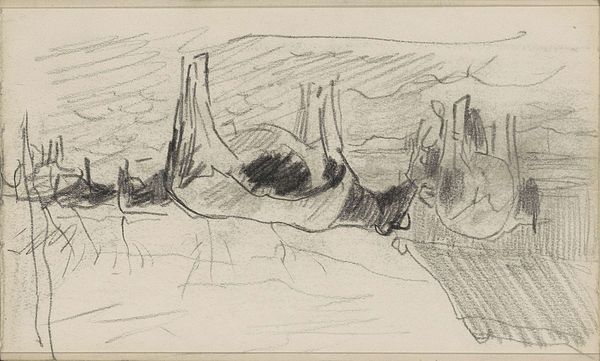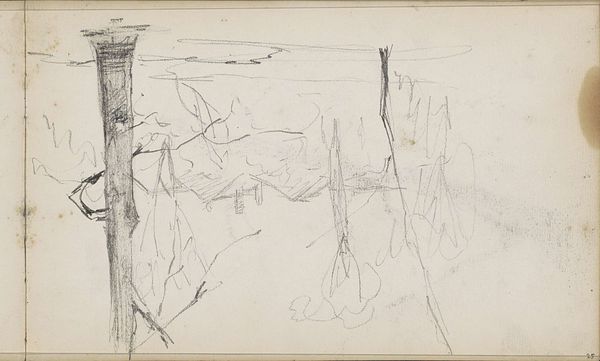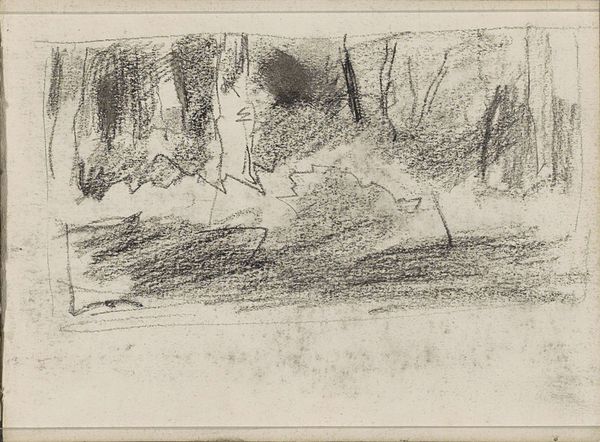
drawing, pencil
#
drawing
#
impressionism
#
pencil sketch
#
landscape
#
pencil
Copyright: Rijks Museum: Open Domain
Editor: Breitner's "Landschap," created circa 1883-1885 using pencil, currently resides here at the Rijksmuseum. I’m struck by how raw and immediate it feels; like a fleeting glimpse captured on paper. What do you see in this piece? Curator: I appreciate your initial impression. From a formalist perspective, the power of this drawing resides in its very incompleteness. Notice how Breitner uses line and shading not to replicate reality, but to construct a visual experience. The composition guides our eye, utilizing the contrast between the dense, dark foliage and the open, lighter areas of the paper. Editor: So, the white space is as important as the pencil marks themselves? Curator: Precisely. The negative space defines the shapes and volumes, providing a crucial element of visual balance. Consider the texture, the varied pressure of the pencil creating a range of tones. This manipulation of the medium is integral to understanding the artwork’s expressiveness. Does this enhance or alter your first impressions? Editor: It does! I was focused on what was *there,* but now I see how carefully the emptiness is considered, defining shapes and shadows. It is not just what is present but what the artist purposefully leaves out that helps create the overall feeling. Curator: Precisely. Understanding the relationship between form and space allows us a deeper engagement with the artist's intention and artistic success. Editor: This conversation shifted my focus! Now, I see intention and the interplay of positive and negative space. Curator: Indeed, sometimes what appears unfinished or raw can be the most revealing about the underlying structure and artistic decision-making.
Comments
No comments
Be the first to comment and join the conversation on the ultimate creative platform.
